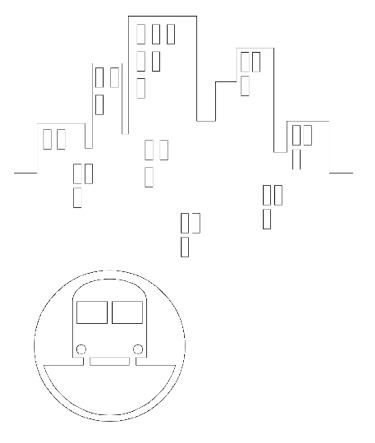A Profitable Way to Build More Affordable, Convenient, and Prosperous Cities,
by Turning Underground Wasteland into New Transportation Corridors.
SUBSTEADING
by Kyle M. Kirschling & Raymond C. Niles
Imagine if getting to the airport were as easy as riding an elevator, if trains were as clean and comfortable as a limousine, if it took half as long to get anywhere in the city. In this paper, we show how Substeading (underground homesteading) can achieve this within a generation. In addition to proposing a new legal technology, we present specific projects that would be profitable today, despite high tunneling costs.
Substeading is economically powerful, based on proven technology, and could transform big cities in a generation.
Substeading would create brand-new and conveniently-located rights-of-way, ideal for new urban transportation networks and other infrastructure.
Substeading is politically practical because it has minimal environmental impacts, requires no government funding, and doesn’t use eminent domain.
Substeading would naturally pave the way for bigger and better cities by nurturing new construction and infrastructure technologies and by eroding regulatory obstacles to new development.
Press
January 24, 2022 - Excerpts from video presentation for Young Professionals in Transportation (YPT): “What is substeading?” and “What new tunnel projects would substeading make profitable?”
January 3, 2022 - Audio interview with David Forsyth on the Freedom Adventure Podcast
“The future now”
“A new Substeading Act will set the ground rules for productive use of the underground desert, and then let transportation entrepreneurs do the rest”
“There are an endless number of projects that could be profitable, if new underground corridors can be securely homesteaded by investors and entrepreneurs”
About Kyle
Kyle M. Kirschling is an urbanist who specializes in improving cities’ infrastructure. He is a licensed CPA and holds a Master’s degree in Urban Planning from Columbia University.
As an advisor to the New York City Transit Authority, he sped up subway trains (reversing a 23-year trend) by conceiving a new operations strategy, saving two to four minutes per train trip and increasing on-time performance from 67% to 81% in 12 months, at zero cost (includes the “Save Safe Seconds” campaign and “SPEED Unit,” as reported in The New Yorker, The New York Times, and elsewhere).
He is the author of Engineering the New York City Subway, the first publication to explain why New York City has a subway, and he is the author of An Economic Analysis of Rapid Transit in New York, 1870-2010, an evaluation of the impact of private, public, and hybrid institutions for transit ownership and operation.
About Ray
Raymond C. Niles is a Senior Fellow and columnist at the American Institute for Economic Research and a former university professor. He holds a Ph.D. in Economics from George Mason University and an MBA in Finance & Economics from the Leonard N. Stern School of Business at New York University.
Prior to embarking on his academic career, Niles worked for more than 15 years on Wall Street as senior equity research analyst at Goldman Sachs, Schroders, and Citigroup, and as managing partner of a hedge fund investing in energy securities. In addition to numerous articles in scholarly and popular publications, Niles has contributed book chapters to In Pursuit of Wealth: The Moral Case for Finance, and the recently published book, Coronavirus and Economic Crisis, edited by Peter G. Earle, and published by the American Institute for Economic Research.





